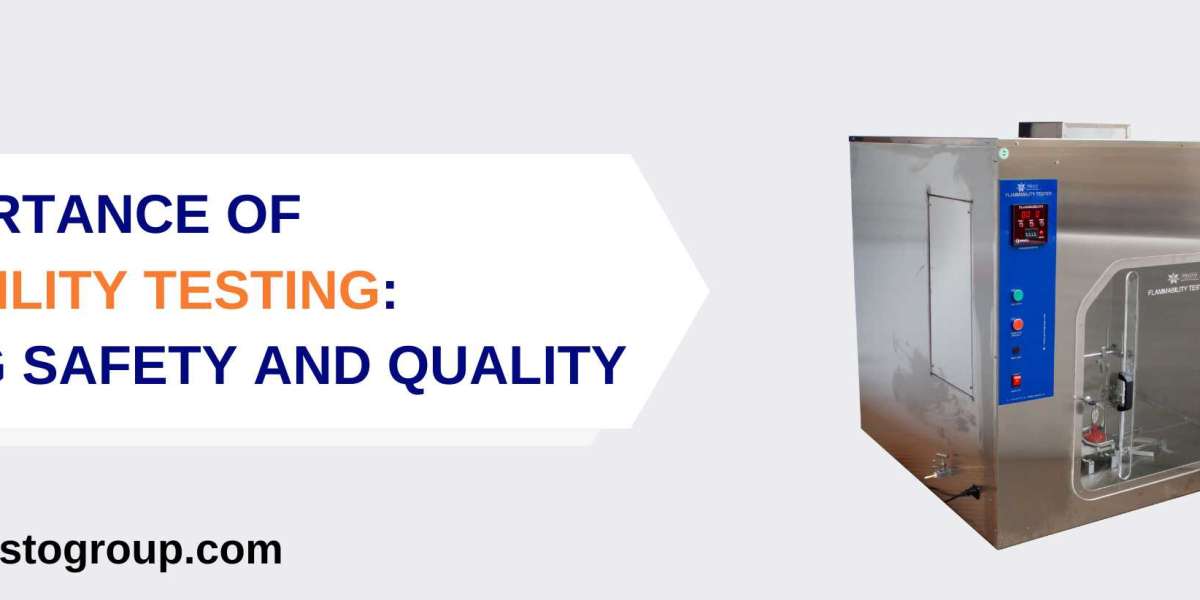Flammability tester Introduction
In today's fast-paced world, technology and innovation are continuously transforming our lives. From household appliances to consumer electronics, manufacturers strive to deliver products that not only enhance our daily experiences but also prioritize safety. Flammability testing is a crucial aspect of product development, particularly for items that are prone to ignition or combustion. This blog explores the significance of flammability testing, its underlying principles, and the vital role it plays in ensuring consumer safety and product quality.
Understanding Flammability Testing
Flammability testing is a specialized procedure that assesses the propensity of a material or product to ignite and sustain combustion. The primary objective is to identify potential fire hazards and mitigate risks by evaluating how the item behaves when exposed to open flames, high temperatures, or other ignition sources. Industries such as automotive, electronics, textiles, furniture, and building materials rely heavily on flammability test to adhere to safety regulations and maintain their reputation for delivering secure and reliable products.
The Flammability Tester: A Key Instrument
At the heart of flammability testing lies the flammability testing equipment, a crucial instrument that allows manufacturers, researchers, and regulatory authorities to conduct precise and standardized tests. The flammability tester simulates real-world fire scenarios and measures the material's reaction to ignition sources, thereby providing valuable data to analyze the potential risks and devise appropriate safety measures.
Understanding the Horizontal Flammability Tester
The horizontal flammability tester is a specialized equipment used to determine the horizontal burning rate and the extent of flame spread along the surface of a material or product. It replicates a controlled fire scenario, enabling researchers and manufacturers to observe the material's reaction to an ignition source, heat, and flame propagation.
Working Principle of the Horizontal Flammability Tester
The testing procedure involves placing the sample material horizontally and applying an ignition source to one end. The ignition source could be an open flame or a radiant heat source, depending on the testing standard. The testers observe and record how the flame propagates along the surface and how long it takes for the flame to reach a specified distance.
Applications in Various Industries
- Textile Industry
In the textile industry, the Horizontal Flammability Tester is extensively used to evaluate the flammability of fabrics, clothing, and furnishings. Testing helps manufacturers identify potential fire hazards and develop fire-resistant materials for applications in public spaces, hotels, hospitals, and transportation.
- Furniture Industry
Furniture items, particularly upholstered products, are susceptible to fire incidents. The Horizontal Flammability Tester plays a vital role in assessing the fire behavior of furniture materials and ensuring compliance with safety regulations. Manufacturers use the test data to enhance fire resistance and reduce the risk of fire spreading in domestic and commercial settings.
- Electronics Industry
Electronic devices often contain plastic components that may contribute to fire incidents. The Horizontal Flammability Tester helps the electronics industry determine the fire resistance of plastic casings and connectors, ensuring safer products for consumers.
- Automotive Industry
In the automotive sector, the Horizontal Flammability Tester is utilized to assess the fire performance of interior materials such as seat covers, carpets, and dashboard components. As electric vehicles become more prevalent, testing the fire resistance of batteries and associated components becomes increasingly crucial.
- Compliance with Safety Standards
The Horizontal Flammability Tester plays a pivotal role in complying with various safety standards and regulations established by organizations such as ASTM, ISO, and IEC. These standards dictate specific testing methods and performance requirements for different materials and products, ensuring consistent safety across industries.
Understanding the Vertical Flammability Tester
The vertical flammability tester is an essential piece of equipment used to evaluate the flammability and fire propagation behavior of materials in a vertical orientation. It provides valuable data on the material's ignition resistance, burning rate, and flame spread characteristics, helping manufacturers and researchers assess potential fire hazards and develop fire-resistant products.
Working Principle of the Vertical Flammability Tester
The testing procedure involves suspending a vertically oriented sample of the material being tested. A controlled ignition source, such as a small flame or radiant heat, is applied to the bottom edge of the sample. Researchers observe and record the flame spread along the material's surface and measure the time taken for the flame to reach a specific point, often referred to as the "burn length."
Applications in Different Industries
- Textile Industry
In the textile industry, the vertical flammability tester is commonly used to assess the fire resistance of fabrics, curtains, and other textile products. This helps manufacturers comply with safety standards and regulations for textiles used in public spaces, residential buildings, and transportation.
- Building Materials Industry
Vertical flammability testing is crucial for building materials like wall coverings, insulation materials, and decorative laminates. It ensures that these materials do not contribute significantly to the spread of fire in buildings, thus enhancing overall fire safety.
- Aerospace Industry
In the aerospace sector, where fire incidents can have catastrophic consequences, the vertical flammability tester is used to evaluate the fire resistance of aircraft interior materials. This testing helps ensure that aircraft cabins are equipped with fire-resistant components, reducing the risk of fire propagation in the event of an emergency.
Compliance with Safety Standards
The vertical flammability tester is an essential tool for complying with various safety standards and regulations, such as those set by ASTM, ISO, and FAA. These standards define specific testing protocols and performance requirements for different materials, ensuring consistency and reliability in fire safety assessments.
Conclusion
Flammability testing is an indispensable process that ensures the safety and quality of various products in our everyday lives. You can get the best flammability tester price by presto in India. From furniture to electronics and automobiles, the application of flammability testing is wide-ranging, making it an essential aspect of product development and manufacturing. Through rigorous testing, manufacturers can identify potential fire hazards, design products that meet safety standards, and provide consumers with reliable, fire-resistant items. As technology progresses, flammability testing will continue to play a pivotal role in safeguarding lives and property, making the world a safer place for everyone.








